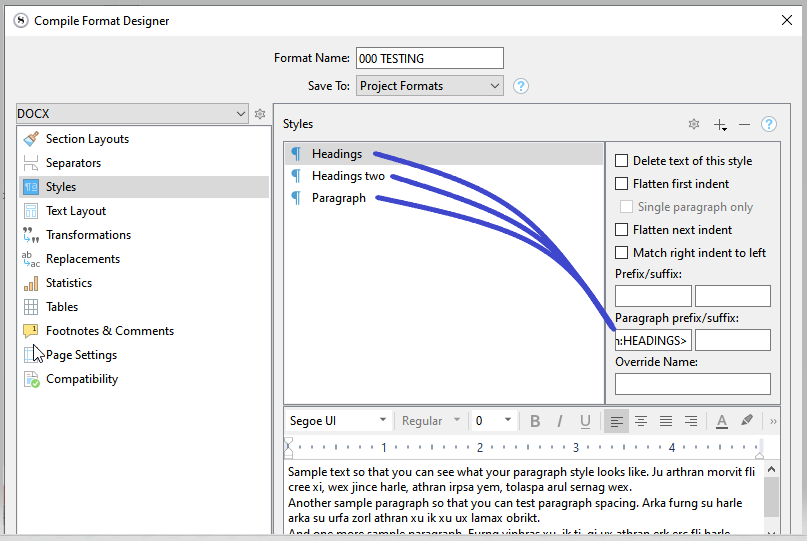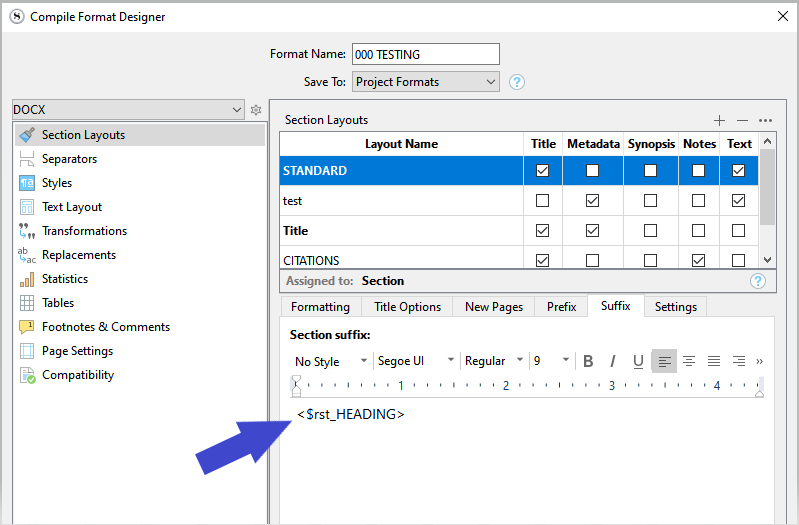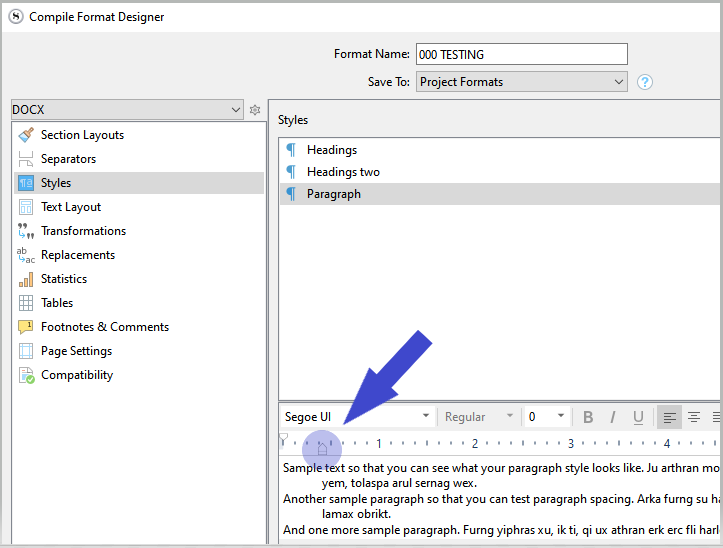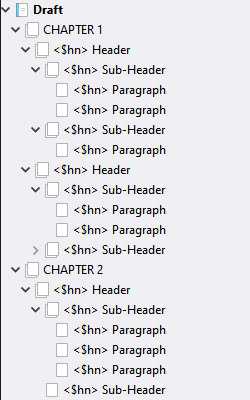You will have to use styles for all of these elements (including paragraphs).
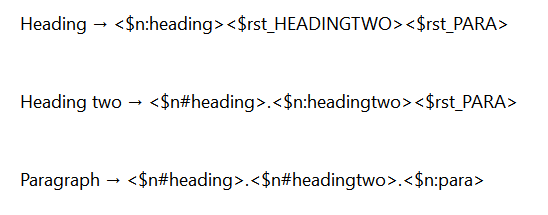
These above placeholders go in the Paragraph’s prefix (styles panel - compile format) :
→ Don’t forget to have a space at the end of your placeholders sequence, so that the numbering is detached from the paragraph’s first letter.
. . . . . . . .

This above will reset your HEADING ONE to “1” at the beginning of each new documents :
Make sure to add it as a suffix for all the needed layouts (top section of the above screenshot).
. . . . . .
For more details, refer to the placeholders list.
It should be somewhere under the help menu (that’s where it is in the Windows version.)
<$n:stringname> inserts the value of the string’s “n” incremented by 1.
<$n#stringname> inserts the current value of the string’s “n”, without incrementing it.
. . . . .
You should get this :
→ Whether the HEADING is all caps or not is up to you. It has nothing to do with the placeholder here.
- HEADING
1.1 Heading two
1.1.1 Paragraph
1.1.2 Paragraph
1.2 Heading two
1.2.1 Paragraph
- HEADING
2.1 Heading two
2.1.1 Paragraph
2.2 Heading two
2.2.1 Paragraph
=Next document=
- HEADING
1.1 Heading two
1.1.1 Paragraph
1.1.2 Paragraph
etc
. . . . . .
You can also skip a HeadingTwo if you don’t need it, paragraphs will still reset to “1”, as I have included <$rst_PARA> in both places. (HEADING and HeadingTwo)
. . . . . .
If you don’t want your HeadingOne to reset between documents and keep incrementing throughout the compiled output, just don’t reset it in the layout’s suffix at all.
. . . . . .
Note that the indents have to be set in the editor and saved within the styles. (You can also further tweak them in the style’s panel of your compile format, though. ← So that you get what you want once compiled, but that it doesn’t look like a mess in the editor, the numbering not being in yet, waiting to be inserted at compile.)
And (and this is important) you need to take into account that the numbering (generated by the placeholders) is part of the paragraph. Meaning that to make it look clean, you’ll have to take into account the space it occupies on the first line of your paragraphs, and adjust this indent below, so that the paragraph looks like a “clean block”.

You can see in the above screenshot that it looks like the indent is all wrong, but, once the numbering from the placeholder is inserted, it should line up.
. . . . . .
This should work. 
(I am only 98% sure – or 2% insecure today ; depends on how you look at it, I guess.
I had a hard time designing this post, as the editing count shows… My apology if I made a mistake somewhere – someone will call it out if that is the case, and that is alright.)
. . . . . . .
P.S. If you don’t want to do it using styles, you can do it in the editor instead, but you will have to insert the right sequence of placeholders and resets everywhere it is needed.
The only good reason I can see to do it like that would be in the case where you’d have a few consecutive paragraphs that you wish to be only numbered once and be treated as a single text unit.
Still, using a different style in this case for paragraphs that should not be numbered (and have their indent tuned accordingly) would be way more convenient.
It all depends then on how much of a cue of what is “going to happen” you wish to visually get from the editor.
If this only concerns parts of your work, I’d recommend then using styles only where needed. Keep things simple (use “no style” for your body text), and only use styles where you need the numbering to kick in.
. . . . . .
P.S.2 The other options you mentioned in your original post might be just as good. I don’t know. I use neither Markdown or LaTex.

